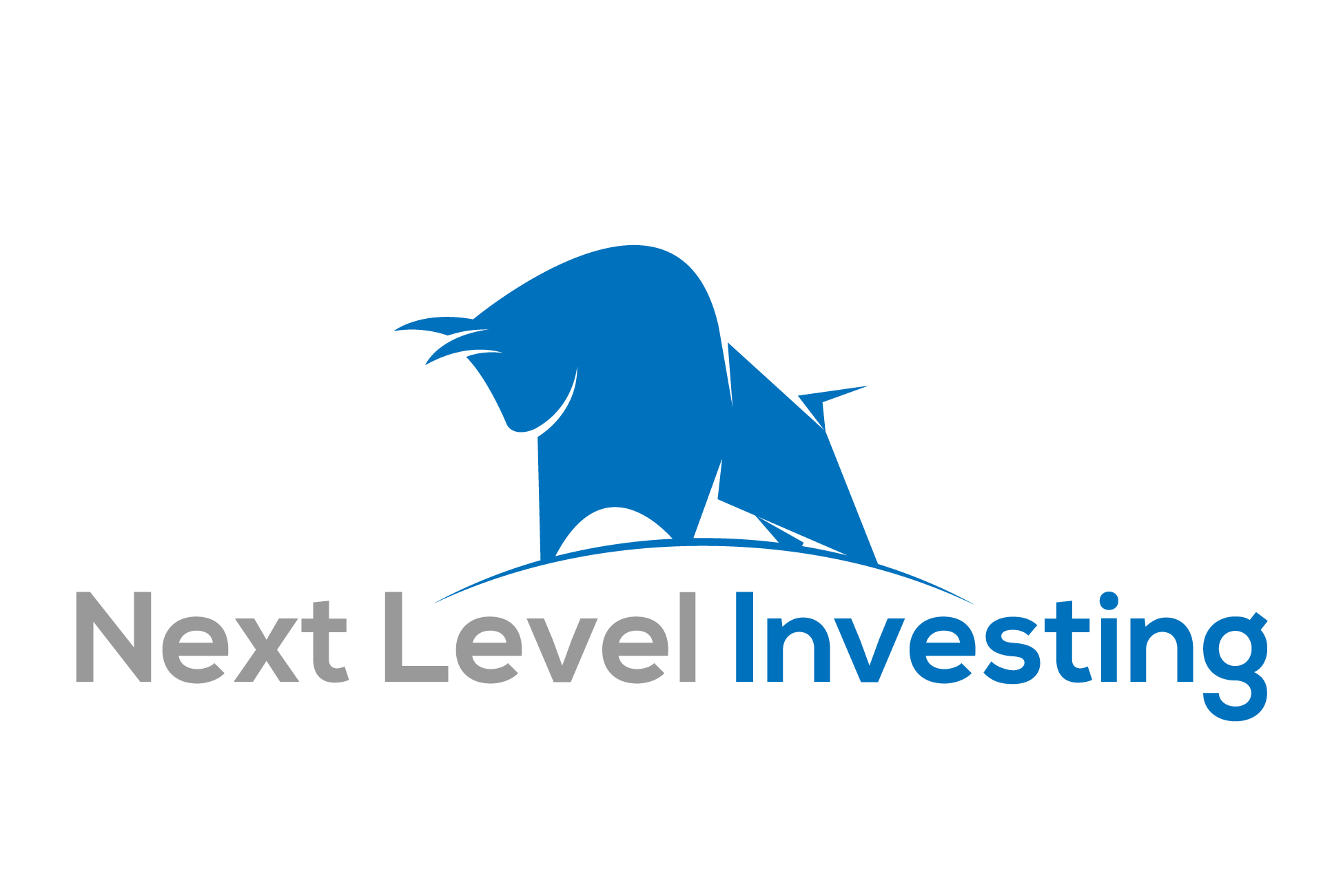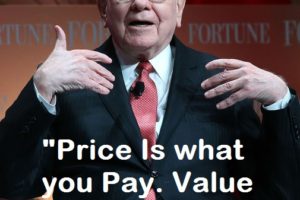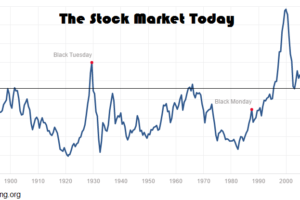
It’s Valuation day!
If your read my Last Post, we looked at Mohnish Pabrai’s updated list of Uber ‘Cannibals’. In this list you’ll have seen the updated list of stocks that feverishly Buyback their own stock. Due to these buybacks, and other business economics, these companies have outperformed the S&P 500 by 6.3% on average for the last 24 years. (That’s why you should read it…)
Perhaps due to my ‘Canadianess’ (it’s a real word, don’t look it up…) I only recognized one of the stocks on that list:
Lowe’s.
So, today I thought it would be fun (and maybe even educational... What? It can be both…) to run through a basic analysis of Lowe’s Company. And more specifically, What I think is its current value. I guess I’d call this a shallow analysis because I’m not going to be diving too deep into the company. So, let’s stick with that. Here’s what we need to know before we can make any investment.
What we need to ask ourselves
Part 1: Am I capable of understanding this business? (Meaning)
Part 2: Does this business have excellent Long-term Economics? (Moat)
Part 3: Is the Management team honest and disciplined capital allocators?
Part 4: Is the stock seriously undervalued? (Margin of Safety)
Part 5: Are there any Value Investing Guru’s I respect who Own or are buying this Business (Shameless Cloning).
These are the long standing business metrics for proper investing. Don’t take my word for it. Listen to Charlie Munger on the subject: (The 6:00 is where he lists what we need to know).
Disclaimer: This is for entertainment and educational purposes only. This is not investment advice. I am not an investment advisor, nor have I considered your personal situation as your fiduciary. In other words, any investment you make (or don't make) is completely your responsibility.
Part 1: Am I capable of understanding this business?
This is always the first question we need to ask ourselves. It’s the starting point. If we can’t answer ‘Yes’ to this question, we stop here and move on. Simple as that.
I already know the company Lowe’s so this is an easy ‘yes’ for me. But, for those of you who don’t, I’d find more information by googling the stock. To do this, I first google the ticker ‘LOW stock’ and this pops up.
You can see it has a large market cap of 73.60 Billion, a P/E of 24.7 and a Dividend yield of 1.63%. Right away this looks fairly expensive to me. But keep in mind, it could be justified if the company is growing at a good clip.
A good rule of thumb: The P/E ratio is reasonable if it’s twice that of the historical earnings growth rate.
However, we don’t want to pay a ‘reasonable price’. We want to only buy (anything) if it’s both obviously and deeply on sale. This is extremely important. If we are disciplined enough to only buy the businesses we think are awesome, at obviously cheap prices, it protects us from ourselves.
Our calculations for the future of the business are full of assumptions. Because of this, we have to demand a large Margin of Safety to give us a large cushion against our predictions. This way, even if our predicted outcome is wrong, we still have a good chance of never losing our money. And that is the only thing we need to pay attention to.
Anyway, back to it…
I next scroll my way down to Yahoo Finance, click that link, then click company profile. This will give me an overview of what the company does, how big they are, and who they serve. Here’s what I found:
Description:
Lowe’s Companies, Inc. operates as a home improvement company in the United States, Canada, and Mexico. It offers a line of products for maintenance, repair, remodeling, and decorating. The company provides home improvement products in various categories, such as lumber and building materials, tools and hardware, appliances, fashion fixtures, rough plumbing and electrical, seasonal living, lawn and garden, paint, millwork, flooring, kitchens, outdoor power equipment, and home fashions. It also offers installation services through independent contractors in various product categories; extended protection plans; and in-warranty and out-of-warranty repair services. The company sells its national brand-name merchandise and private branded products to homeowners, renters, and professional customers; and retail customers comprising individual homeowners and renters. As of March 24, 2017, it operated 2,365 home improvement and hardware stores. The company also sells its products through online sites comprising Lowes.com and Lowesforpros.com; and through mobile applications. Lowe’s Companies, Inc. was founded in 1946 and is headquartered in Mooresville, North Carolina.
Now, if you’re like me, and you own a home, then you’ll probably be able to understand this business. I don’t know about you, but my wife is always looking for new ways to improve our house, inside and out. Because of this, I think I’m certainly capable of understanding this business. That’s the first thing I need to know before I can move onto Part 2.
Note: If I can’t understand the business, I won’t be able to properly Value it. So I move on. Simple as that.
Part 2: Does this Business have excellent long-term Economics
In other words, does this company have a competitive advantage, or a Moat, that protects it from being copied or destroyed. This may be the most important question to ask ourselves with any investment. As a Value investor, we are constantly trying to assess the future, and have to ask ourselves one simple question:
“Will this Company be worth more in 10 years than it is today?”. Not only do we have to answer this question, but we want to be sure about our answer. Here’s another way to think about this…
Thought experiment: Imagine that you have to invest your entire family’s wealth in this one business. Now imagine that the stock market will shut down for the next 10 years, are you confident that your money will be safe? And would you be willing to leave your family's wealth in this one business for that amount of time?
This is a good mental exercise to run through before making any investment decision. Remember: We don’t want to lose our money, and because of this, we need to be as sure as possible.
So, the question remains. Does Lowe’s have a moat? And if they do, can I identify it. This is a Quick Valuation, so I’ll just say they likely have a Brand Moat (you can learn more about the different types of Moats here).
Here’s what Pabrai had to say about the business:
“Over the last thirteen years, Lowe’s has reduced its share count by a stunning 45%. Lowe’s share count has dropped by 30% in just the last five years. Like Home Depot, Lowe’s has an entrenched position in the home improvement superstore category. Not a business that’s easy for Amazon to disrupt. As home building gets back to historical norms of over a million new homes being built every year, Lowe’s has natural tailwinds as far out as the eye can see.”
So, I would say that Mohnish approves the company as well, and thinks it has excellent long-term economics. People are going to need to buy products for their home, and usually, they are looking for advice when doing so.
Another way to see if Lowe’s has a Moat is by looking at it’s past growth numbers. This gives us a snapshot of how the business has performed over time. If it’s continued to grow at a relatively stable pace, it likely has a Moat of some sort. Strong and consistent growth numbers also makes our valuation much more accurate. If the past is hazy, the future is even more so. Keep that in mind when doing any valuation on a business.
Growth Numbers
(Source: Rule #1 Toolbox)
This isn’t as predictable as I’d like to see it. The Book value has been declining since 2010. I’d have to do a bit of digging to find out why that is. EPS is all over the place as well, which makes it difficult to predict. Let’s move onto the next step, Managment.
Part 3: Is the management Honest, and Disciplined?
Half of this question is actually very easy to answer. If you scroll up a bit and focus your attention on ROE (return on Equity) and ROIC (return on Invested Capital) you can see that they have really great growth scores.
Note: If management is able to achieve growth scores above 10% for ROIC and ROE, the Company likely has a strong capital allocator at the helm. (ROIC is Most important because it includes debt)
The second half requires more research. If you look at the profile page on yahoo finance you’ll see all the top executives under the heading ‘Key Executives’. Robert Niblock is Lowe’s CEO and you’d want to find out as much as you can about him before making any investment.
For this Quick Valuation we’ll assume that he’s amazing (which he very well could be) and move onto step 4: Valuation.
Part 4: Is this stock seriously undervalued?
For this section I’d start by looking at the Fundamentals of the company, and see what the numbers look like. Again, you can find this on yahoo finance under the ‘Statistic tab’.
This just gives me a quick overview of how the company is performing, and some indication of its current price compared to its value. I’ll look at its forward P/E to see if it’s current P/E is justified (the forward P/E is based on analysts estimates for next years’ Earnings).
(Source: Yahoo Finance)
You can see the Forward P/E is 16.23, this tells us that the Analysts expect the company to grow at a fairly decent clip (around 14.6%).
Side note: Analysts are usually wrong. According to James Montier, they are Incorrect by 94% when looking two years out, and by 45% looking one year out. In other words, never trust the outlook of one analyst.
Using the average of a group of analysts is our best choice when we use forecasting in our analysis. You need to analyze all the current numbers to see if the current price is justified.
(Source: Yahoo Finance)
Pay close attention to the Debt compared to Free Cash flow. Ideally, we’d like them to be able to pay off their debt in 3 years or less. Right now Lowe’s is sitting at 4.6 years to pay off the debt. That’s a bit high, but not a deal breaker.
Next you want to make sure that they have enough capital to continue paying their dividend.
(Source: Yahoo Finance)
Important: A payout ratio should always be less than 100% and ideally 60% or lower. Otherwise the dividend is likely not going to survive. A payout ratio above 100% means they are using debt to pay the shareholders, and that’s a BIG warning signal to me that the CEO may not be a so excellent.
Margin of Safety Calculation
Let’s do a quick Discounted Cash flow analysis first. Then something called a Reverse Engineered Discounted cash flow. To do this I’ll go to Gurufocus. Here’s the Parameters I used:
The analysts are expecting 14.6% growth for the next 5 years, then I went with what I think is a reasonable growth rate for the next 10 years.
Note: I always use a discount rate of 15% or more. The larger the discount rate, the bigger the cushion we have in case our calculations are incorrect (which they likely will be) we also want a good return for our capital, and a 15% return doubles our money every 7 years.
Here’s what the calculation says is our Margin of safety price:
(Source: Gurufocus)
So there you have it. Assuming my inputs are somewhat accurate, In order for us to get a 15% return per year, we shouldn’t pay any more than $41.59 to own Lowes.
Let’s do one more valuation…
(Source: Rule #1 Toolbox)
For this calculation I left the analysts earnings growth as the basis for the next 10 years, and we should still only pay $48.79 to if we want a good Margin of safety, and therefore, a decent return on our investment in Lowe’s.
This also shows the full value price (aka the sticker price) to be $97.57 a share. 7% above where lowe’s is today.
Now let's reverse engineer the current price of Lowe’s and see what growth rate is currently priced into the stock.
Fact: When you’re a part of my email list, you’ll learn about DCF, Reverse engineered DCF, and all sorts of other fun stuff. Sign up here.
Reverse Engineered DCF
If we use a 5 year period with a terminal growth of 8% we get a Reverse DCF of 35.59%. What this means is, to justify the current valuation, the market is pricing in a 35.59% growth rate over the next 5 years (while analysts only expect 14.6%)
If we change that number to a 10 year period of growth, the company has to sustain a 20.68%. Here’s what it looks like
In the history of the company, the 10 year growth rates for earnings is 7%. Although that number is growing, up to the most recent year... a 20.68% growth rate is extremely unlikely for any 10 year period for this business.
Part 5: Are any Guru’s buying the business?
If it wasn’t so obviously not on sale, I’d be interested to see if any guru’s were buyers as well. But since it’s just not cheap enough, I wouldn’t waste my time. But if you want to check, you can learn how to do that here:
The 5 Absolute Best Resources for Any Investor. Part 2: Focus on the Guru’s
Conclusion
In my opinion, and based on all the calculation and information I looked at:
My fair value for lowe’s = Any price less than $48.78
Sadly, we are nowhere close to that price today. If you like the business, you can keep it on a watch list and dig deeper into the company.
I think this was a good quick Valuation of Lowe’s stock price. The company may have excellent long term economics on it’s side, but I don’t ever want to overpay to own a business, and buying today would very likely be overpaying for the stock. So, it's a pass for me at this time.
That's all I have for you today
We'll talk again soon.
~Ryan Chudyk~
PS.
If you have any other companies you want me to value hit the email button to the right and send me a message. I’ll get back to you right away.
PPS.
Before you go, subscribe to my ever growing newsletter where you’ll learn different ways to evaluate a company and any other interesting things I happen to be learning about. As a thank you I’ll send you my NLI checklist. Click the checklist below now!





1 Comment
Leave your reply.